Today, we will review a number of methods to show file extensions in Windows 11. By default, Windows 11 hides all file extensions.
Advertisеment
Hiding file extensions in Windows 11 prevents unintentional breaking files by accidentally changing their extensions when you rename them. Also, it gives a slightly cleaner look to File Explorer. At the same time, hiding file extensions imposes some security risks, as someone may want to harm your system by sending a malicious file disguised as a Word document, image, video, or any other harmless object. Remember: Never open a file that appears to have a regular extension paired with exe, msi, or dll, For example, NotVirus.jpg.exe.
Windows 10 had the "Show file extensions" command on the ribbon in File Explorer. That option could be used for enabling or hiding extensions with just two clicks. In Windows 11, though, File Explorer went through radical design changes. The ribbon has gone, and it took away many convenient options that now are buried deep inside different Windows settings and Control Panel applets.
Show File Extensions in Windows 11
- Open the Folder Options dialog by using Windows Search (Win + S); enter "file explorer options in the search box.
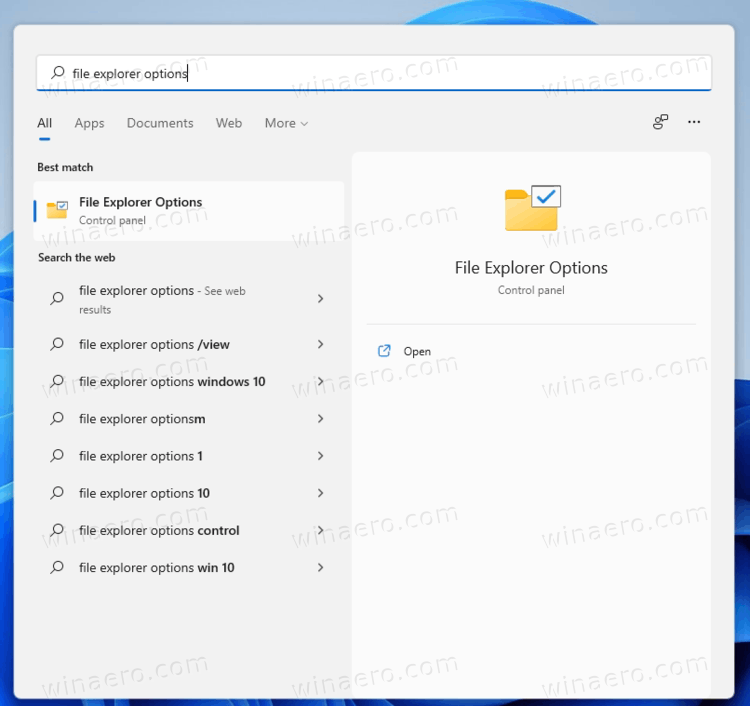
- Switch to the View tab.
- In the "Advanced Settings" list, find the "Hide extensions for known file types" option and turn off (uncheck) it.
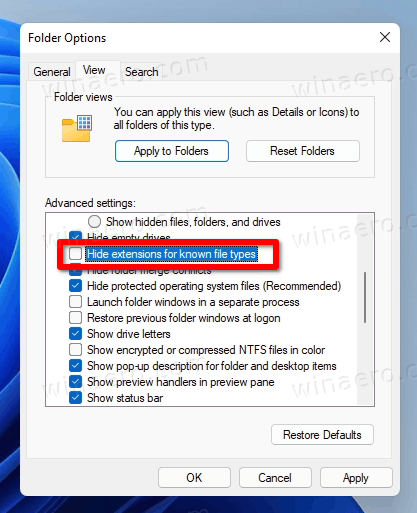
- Click OK to apply the change.
Before:
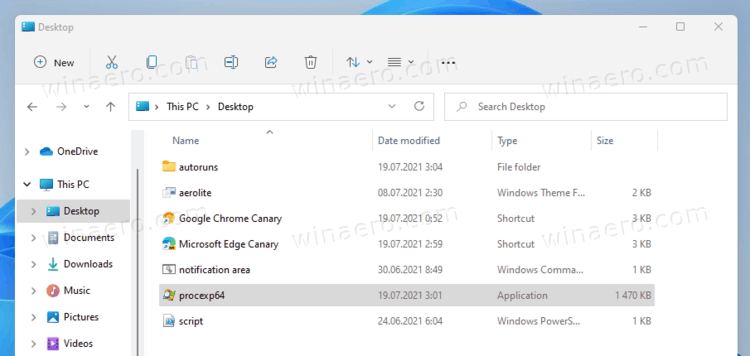
After:
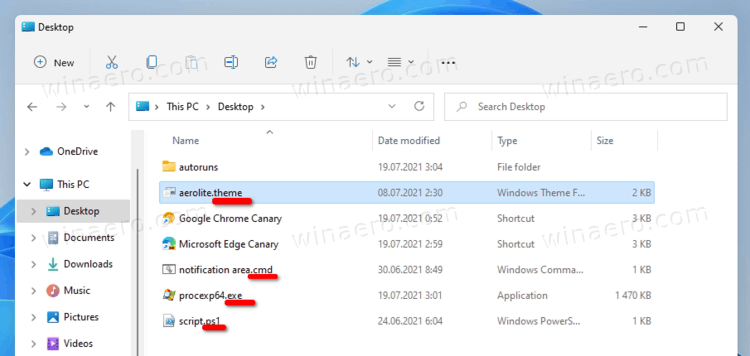
Hide file extensions in Windows 11
If you want to hide file extensions in Windows 11 and restore defaults, repeat the process above and check the "Hide extensions for known file types" option.
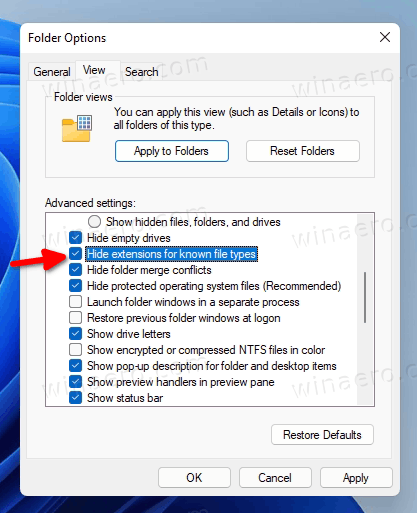
Now, if you open a folder in File Explorer, or refresh your Desktop, the files won't have extensions shown.
However, for specific files File Explorer always hides extensions. And for some of them, it makes them always visible, regardless of the user option reviewed above. For example, you may already noticed that the DLL file extension is always visible.
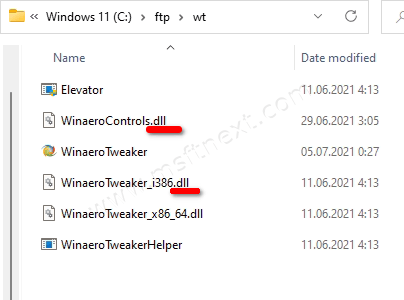
The two next chapters will explain you why this happens.
Show only specific file extensions in Windows 11
The standard option to show or hide file extensions in Windows 11 does not allow specifying exclusions. You may want to hide all extensions but exe and msi. Here is how to enable certain file extensions in Windows 11.
To show only specific file extensions in Windows 11, do the following.
- Open the Registry Editor in Windows 11. You can use the Win + R shortcut with the
regeditcommand, or any other method you like. - Expand open
HKEY_CLASSES_ROOT. here, find the extension you want to appear next to the file name, for example,.docx. - Find the (Default) value and see its value data, also known as
ProgID. In our case, it isWord.Document.12.Write it down or remember.
- Now, go to the
HKEY_CLASSES_ROOT\XXXXkey, where XXXX is the ProgID from the previous step. For example,HKEY_CLASSES_ROOT\Word.Document.12. - Click File > New > String Value. Rename the new value to
AlwaysShowExt.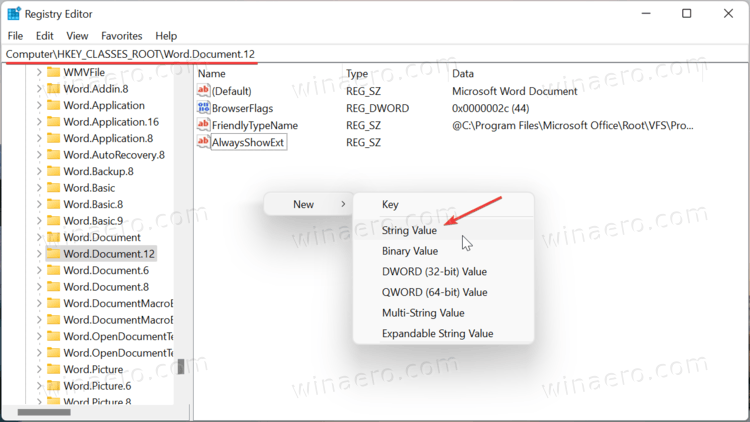
- Sign out and sign back from your user account. You can also restart the computer to apply the change.
Hide specific file extensions in Windows 11
Similar to the previous section of this article, you can set Windows 11 to show all file extensions except one or several. Repeat all the steps except 5. Instead of AlwaysShowExt, create the NeverShowExt key.
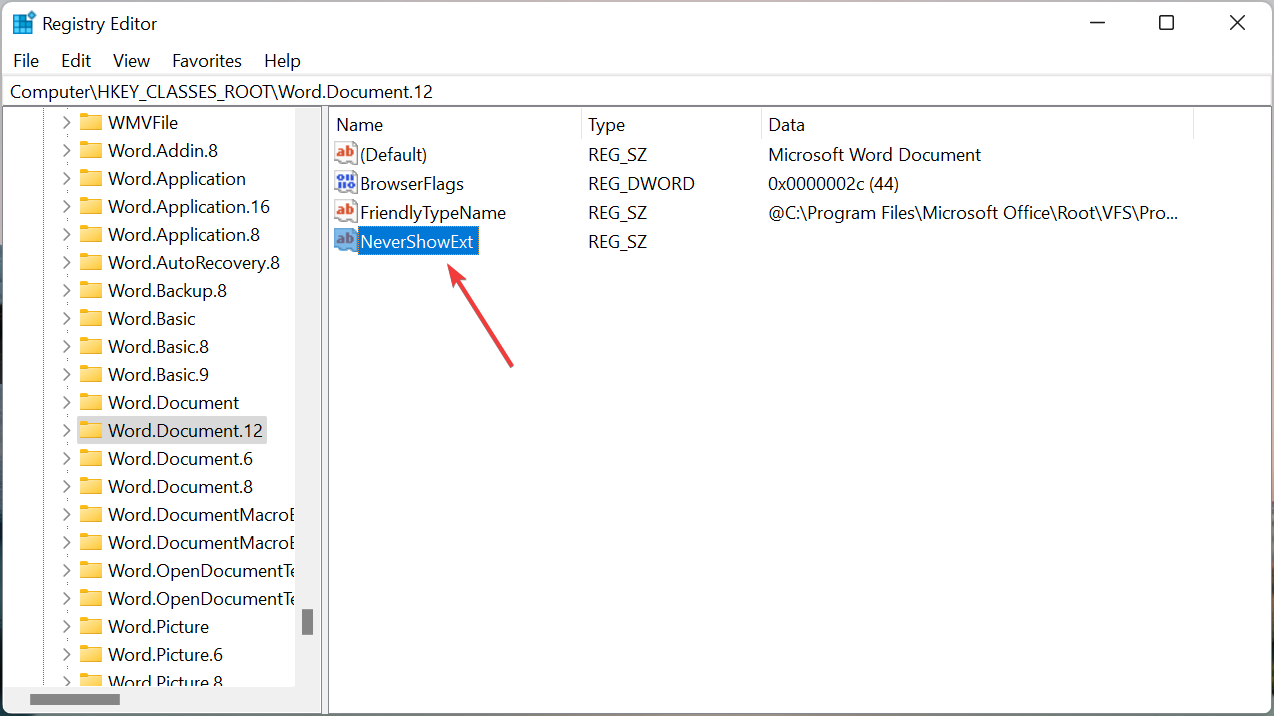
After you restart File Explorer or the entire system, Windows will be showing all file extensions except those with the NeverShowExt keys in the registry with the file extensions enabled in File Explorer.
Support us
Winaero greatly relies on your support. You can help the site keep bringing you interesting and useful content and software by using these options:
If you like this article, please share it using the buttons below. It won't take a lot from you, but it will help us grow. Thanks for your support!
Advertisеment
